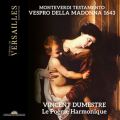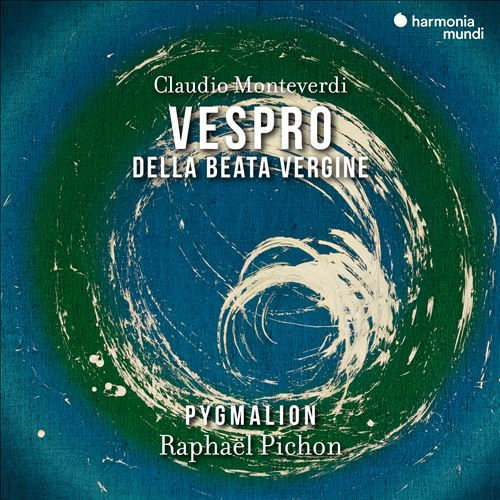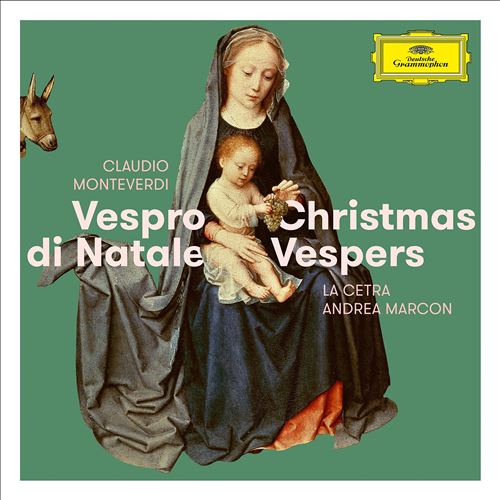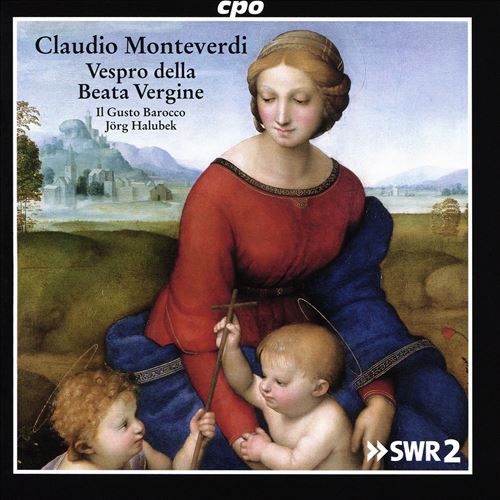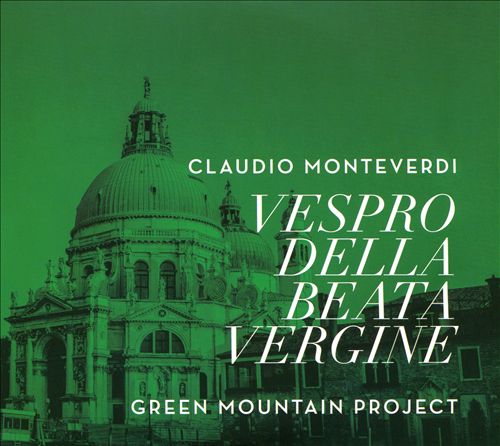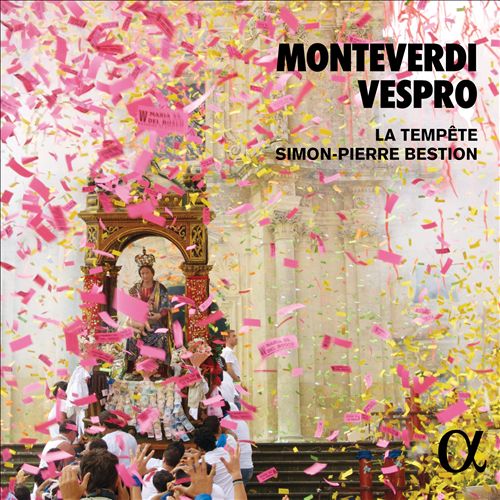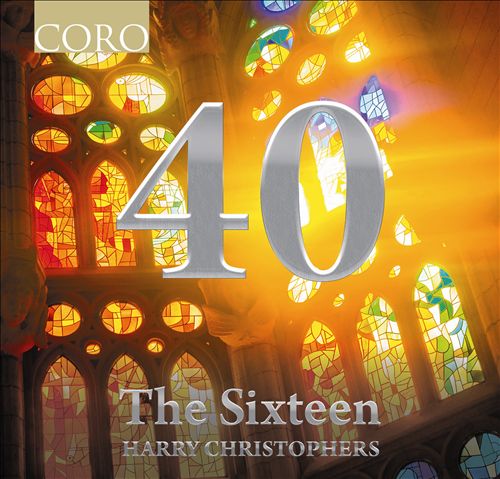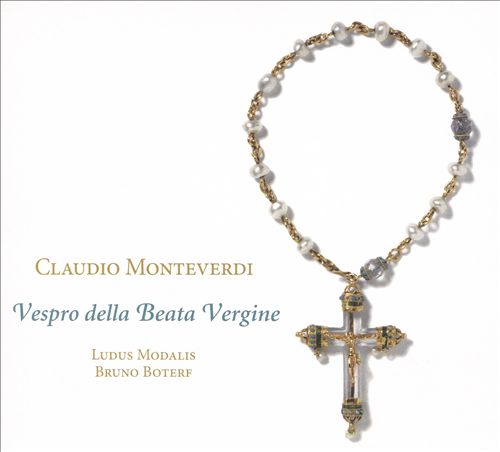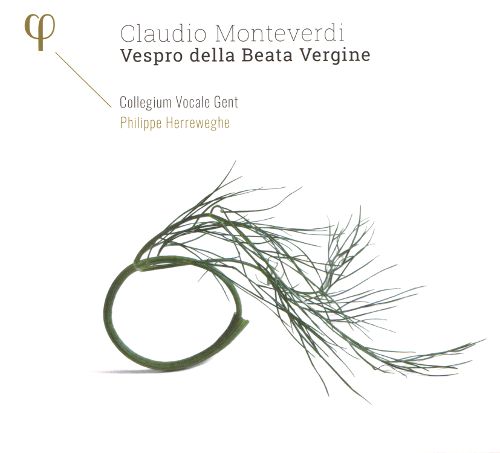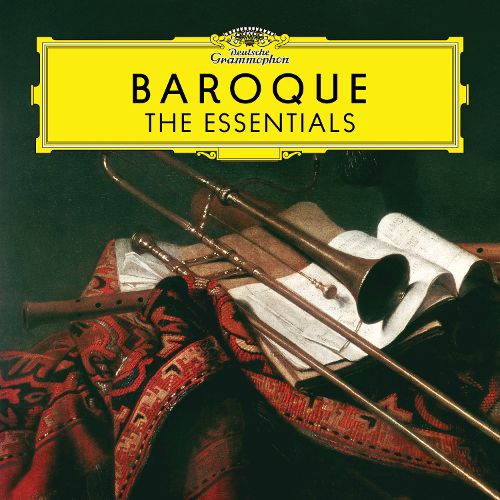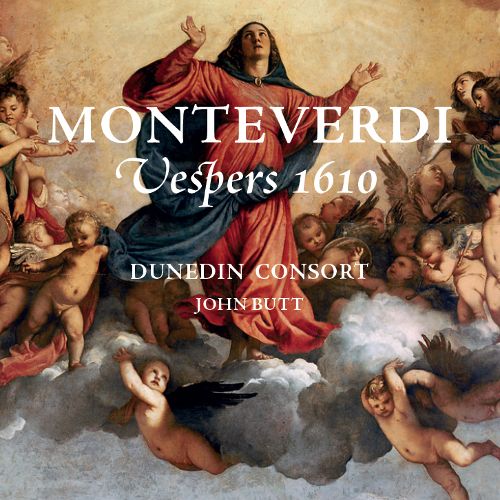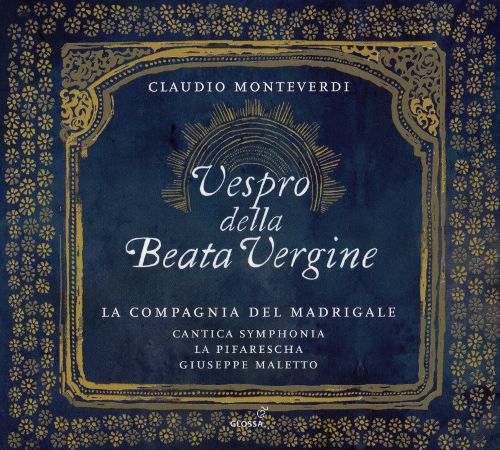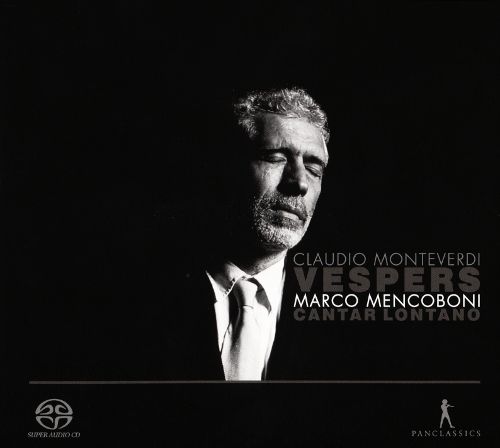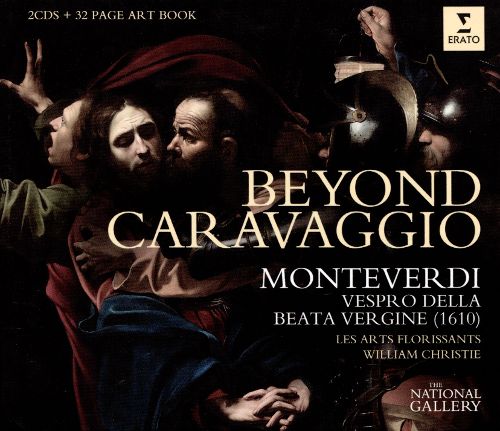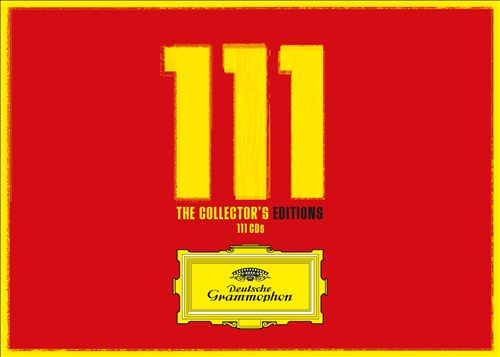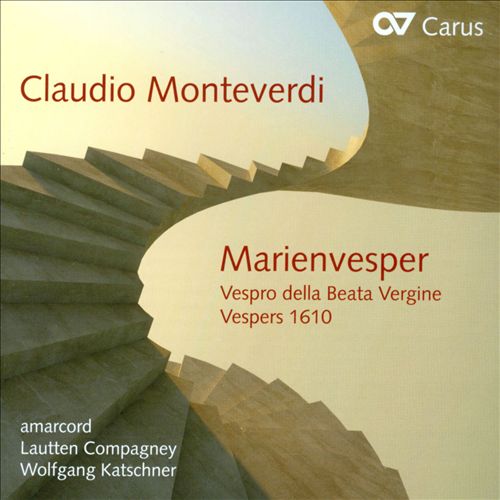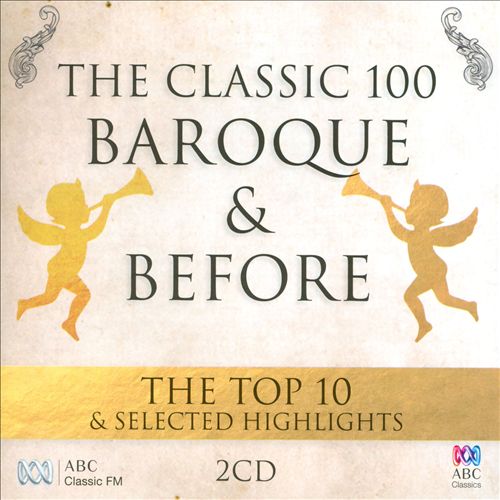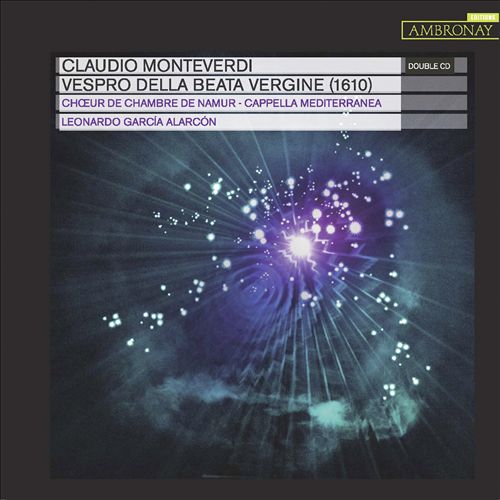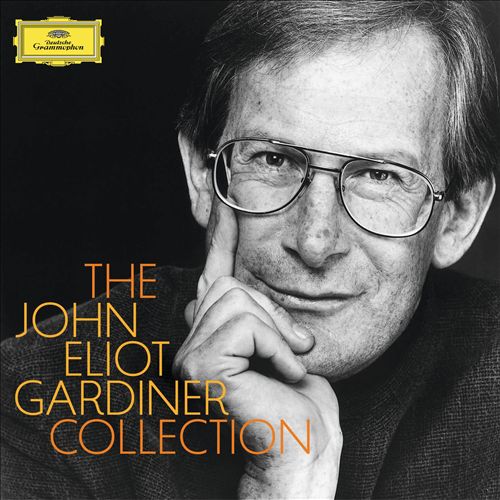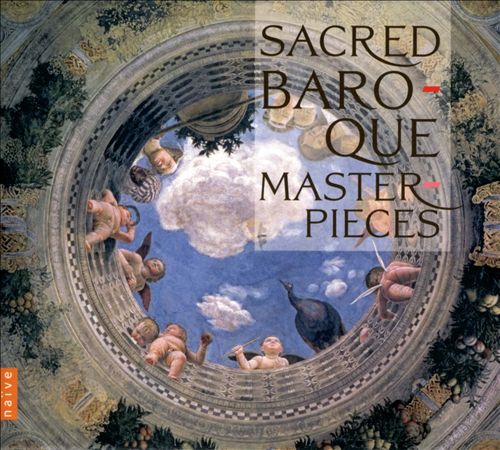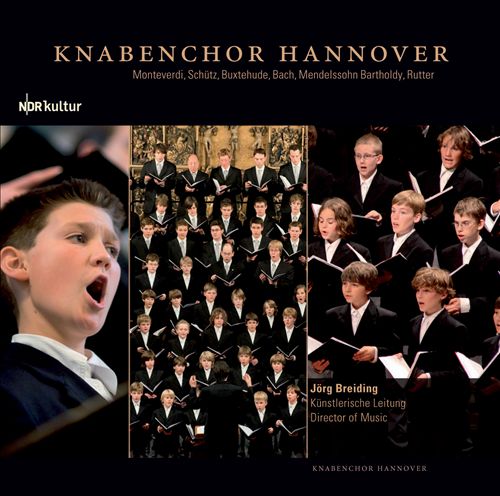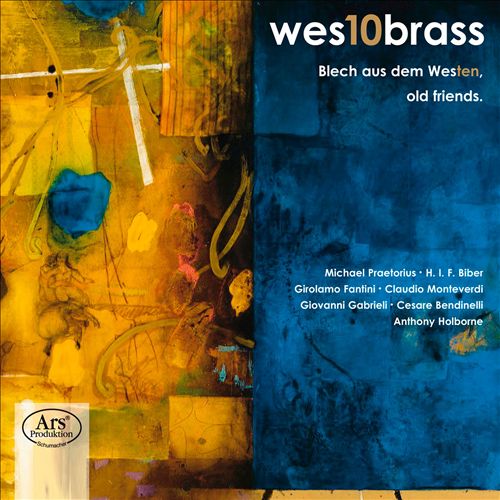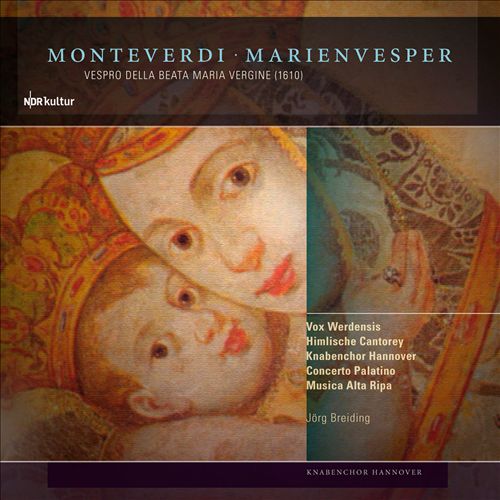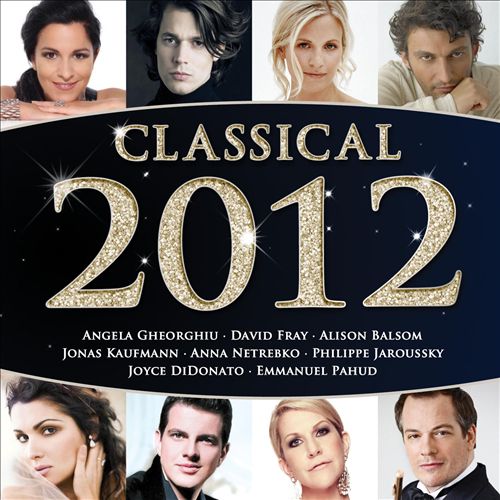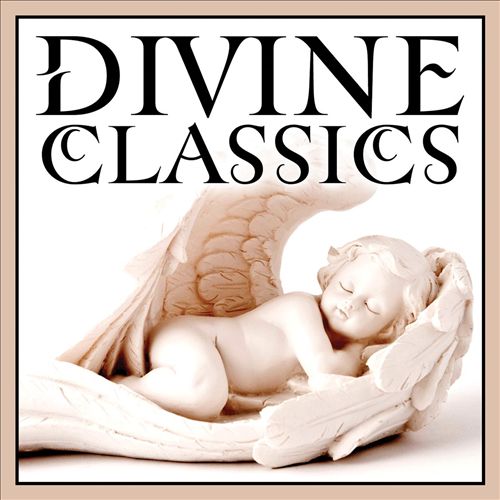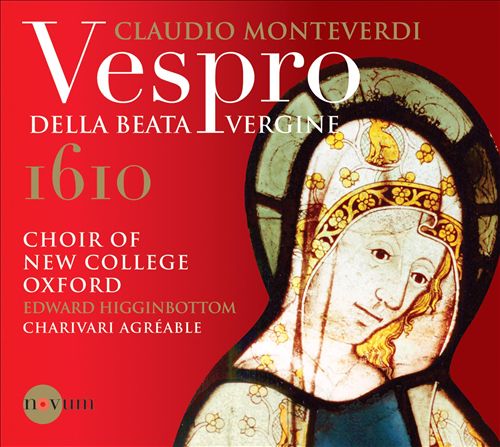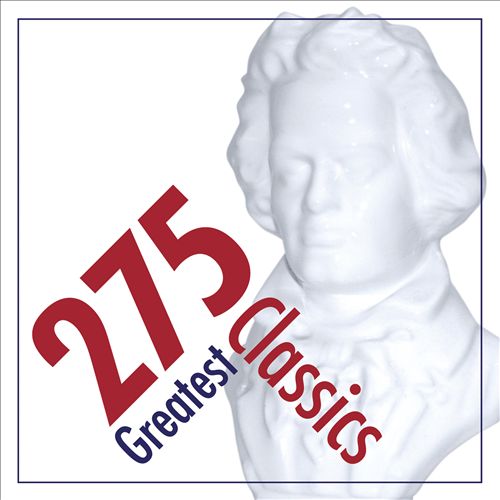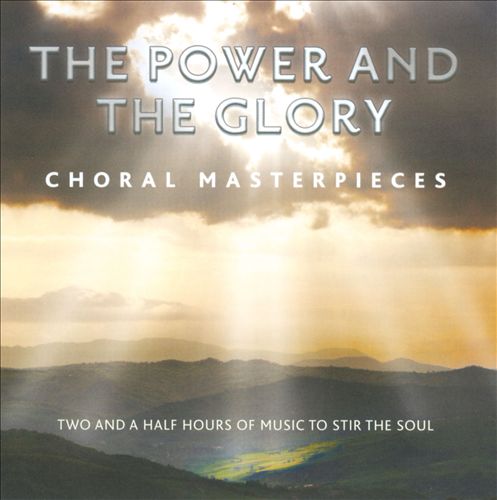Claudio Monteverdi (클라우디오 몬테베르디)
Vespro della beata vergine, SV 206
100
10,000
1,400
WORK INFO
작곡가: Claudio Monteverdi (클라우디오 몬테베르디)스타일:Vespers작곡년도: 1610평균연주: 90:53악장1Domine ad adiuvandum, Mxiv 1232:062Dixit Dominus, Mxiv 1338:063Nigra sum sed formosa, Mxiv1503:384Laudate, pueri, Dominum, Mxiv1536:315Pulchra es, amica mea, Mxiv1703:546Laetatus sum, Mxiv1747:227Duo Seraphim clamabant, Mxiv1905:538Nisi Dominus aedificaverit domum, Mxiv1984:559Audi, coelum, verba mea, Mxiv2278:1810Lauda, Jerusalem, Dominum, Mxiv2374:3611Sonata sopra 'Sancta Maria' ora pro nobis, Mxiv2507:0812Ave maris stella, Mxiv2508:1413Magnificat 1 à 7, Mxiv28518:1014Magnificat 2 à 6, Mxiv3279:39Vespro della Beata Vergine (Vespers for the Blessed Virgin; SV 206 and 206a) — also called Vespers of 1610 — is a musical composition by Claudio Monteverdi. The term "Vespers" (evening prayers) is taken from the Hours of the Divine Office, a set of daily prayers of the Catholic Church which have remained structurally unchanged for 1500 years. In scale, Monteverdi's Vespers was the most ambitious work of religious music before Bach. This 90-minute piece includes soloists, chorus, and orchestra and has both liturgical and extra-liturgical elements. Vespers is composed around several Biblical texts that are traditionally used as part of the liturgy for several Marian feasts in the Roman Catholic church: the introductory Deus in adjutorium (Psalm 69), five Psalm settings, sacred motets (called “concerti”) between the Psalms, a traditional Hymn, a setting of the Magnificat text and the concluding Benedicamus Domino.
Monteverdi’s Marian Vespers of 1610 was his first sacred work after his first publication twenty-eight years prior, and stands out for its assimilation of both old and new styles, although it cannot be specifically classified as prima pratica or seconda pratica, per se. The Vespers were published in July 1610, in combination with a six-voice mass which parodied a motet of Nicolas Gombert; In illo tempore loquante Jesu. Today, over four hundred years later, the precise intentions of this large work are not clearly known or understood. This has been a great topic of debate among musicologists for decades, and it has even been suggested by Graham Dixon that Monteverdi’s setting of the Vespers is more suited towards use for the feast of Saint Barbara, claiming, for example, that the texts taken from Song of Songs are applicable to any female saint. He goes on to write that formatting the Vespers to fit a Marian feast made the work more "marketable". There are several facts that support this view: there are just two Marian songs in the whole work (Audi Coelum and Ave Maris Stella); the sonata could very easily be rearranged to any saint's name; and the text of the Duo Seraphim is connected with Saint Barbara (because she is generally connected with Trinity).From WIKIPEDIA
RELEASED ALBUMS
-
Monteverdi Testamento: Vespro della Madonna 1643November 29, 2024
-
Claudio Monteverdi: Vespro della Beata VergineSeptember 1, 2023
-
Claudio Monteverdi: Vespro di Natale [Christmas Vespers]October 28, 2022
-
Claudio Monteverdi: Vespro della Beata VergineOctober 15, 2021
-
Claudio Monteverdi: Vespro della Beata VergineSeptember 4, 2020
-
Monteverdi: VesproOctober 11, 2019
-
40May 10, 2019
-
Claudio Monteverdi: Vespro della Beata VergineOctober 12, 2018
-
Monteverdi: Vespro della Beata Vergine [2017 Recording]May 11, 2018
-
Baroque: The EssentialsFebruary 16, 2018
-
Monteverdi: Vespers 1610September 1, 2017
-
Claudio Monteverdi: Vespro della Beata VergineApril 14, 2017
-
Claudio Monteverdi: VespersJanuary 20, 2017
-
Leve Klassiek: NPO Radio 4 Hart & Ziel Lijst - Het beste uit 5 jaar (2016)November 4, 2016
-
Beyond Caravaggio: Monteverdi Vespers, 1610October 17, 2016
-
111: The Collector's Editions [111 CDs]December 11, 2015
-
Monteverdi: MarienvesperNovember 11, 2014
-
The Classic 100 Baroque & Before: The Top 10 & Selected HighlightsAugust 1, 2014
-
Claudio Monteverdi: Vespro della beata Vergine (1610)July 8, 2014
-
Archiv Produktion 1947-2013: A Celebration of Artistic Excellence From the Home of Early MusicApril 8, 2013
-
The John Eliot Gardiner CollectionMarch 18, 2013
-
Sacred Baroque MasterpiecesOctober 22, 2012
-
Knabenchor HannoverJune 25, 2012
-
Blech aus dem Westen, Old FriendsJune 19, 2012
-
Monteverdi: MarienvesperMarch 27, 2012
-
Classical 2012November 7, 2011
-
Divine ClassicsSeptember 20, 2011
-
Claudio Monteverdi: Vespro della Beata VergineAugust 30, 2011
-
275 Greatest ClassicsJuly 26, 2011
-
The Power & The Glory: Choral MasterpiecesMarch 25, 2011
FEATURED MOVIES
-
 03:35몬테베르디: Vespro della beata vergine, SV 206 3. Nigra sum sed formosa
03:35몬테베르디: Vespro della beata vergine, SV 206 3. Nigra sum sed formosa -
 04:35몬테베르디: Vespro della beata vergine, SV 206 5. Pulchra es, amica mea1989Basilica di San Marco, Venice
04:35몬테베르디: Vespro della beata vergine, SV 206 5. Pulchra es, amica mea1989Basilica di San Marco, Venice -
 1:41:07몬테베르디: Vespro della beata vergine, SV 206
1:41:07몬테베르디: Vespro della beata vergine, SV 206 -
 14:58몬테베르디: Vespro della beata vergine, SV 206 Part 124 May 2010John's Episcopal Cathedral, Los Angeles
14:58몬테베르디: Vespro della beata vergine, SV 206 Part 124 May 2010John's Episcopal Cathedral, Los Angeles -
 07:12몬테베르디: Vespro della beata vergine, SV 206 part 11989Basilica di San Marco, Venice
07:12몬테베르디: Vespro della beata vergine, SV 206 part 11989Basilica di San Marco, Venice -
 1:35:46몬테베르디: Vespro della beata vergine, SV 206November 7, 2010Old St. Gertrud church Rīga, Latvia
1:35:46몬테베르디: Vespro della beata vergine, SV 206November 7, 2010Old St. Gertrud church Rīga, Latvia -
 10:38몬테베르디: Vespro della beata vergine, SV 206 part 31989Basilica di San Marco, Venice
10:38몬테베르디: Vespro della beata vergine, SV 206 part 31989Basilica di San Marco, Venice -
 04:21몬테베르디: Vespro della beata vergine, SV 206 1. Domine ad adiuvandum
04:21몬테베르디: Vespro della beata vergine, SV 206 1. Domine ad adiuvandum -
 09:28몬테베르디: Vespro della beata vergine, SV 206 part 21989Basilica di San Marco, Venice
09:28몬테베르디: Vespro della beata vergine, SV 206 part 21989Basilica di San Marco, Venice -
 1:34:26몬테베르디: Vespro della beata vergine, SV 20626 September 2014Tivoli Vredenburg, Utrecht, The Netherlands
1:34:26몬테베르디: Vespro della beata vergine, SV 20626 September 2014Tivoli Vredenburg, Utrecht, The Netherlands -
 1:35:14몬테베르디: Vespro della beata vergine, SV 206October 26, 2013Winspear Hall, College of Music University of North Texas
1:35:14몬테베르디: Vespro della beata vergine, SV 206October 26, 2013Winspear Hall, College of Music University of North Texas -
 11:34몬테베르디: Vespro della beata vergine, SV 206 10. Lauda, Jerusalem , 11. Sonata sopraJanuary 2009Theatre du Chatelet, Paris
11:34몬테베르디: Vespro della beata vergine, SV 206 10. Lauda, Jerusalem , 11. Sonata sopraJanuary 2009Theatre du Chatelet, Paris -
 14:12몬테베르디: Vespro della beata vergine, SV 206 1. Domine ad adiuvandum, Mxiv 123January 2009Theatre du Chatelet, Paris
14:12몬테베르디: Vespro della beata vergine, SV 206 1. Domine ad adiuvandum, Mxiv 123January 2009Theatre du Chatelet, Paris -
 12:30몬테베르디: Vespro della beata vergine, SV 206 13. Magnificat 1 a 7, Mxiv285January 2009Theatre du Chatelet, Paris
12:30몬테베르디: Vespro della beata vergine, SV 206 13. Magnificat 1 a 7, Mxiv285January 2009Theatre du Chatelet, Paris -
 06:28몬테베르디: Vespro della beata vergine, SV 206 part 127/07/2011Festival Les Baroquiales
06:28몬테베르디: Vespro della beata vergine, SV 206 part 127/07/2011Festival Les Baroquiales
ALBUM MUSIC
WORKS SHOUTS


